Vietnam’s bus transportation system provides a handy and economical means to travel around the country, connecting major cities and communities with quick and dependable Vietnam bus services.
Whether you’re a budget traveler looking to save money or a local trying to get around, using the bus in Vietnam is a terrific alternative.
In this article, we’ll briefly summarize Vietnam’s public transit bus system and explain why it’s a popular choice for tourists and locals.
See more: In addition to buses, you can explore other means of transportation in Vietnam
Contents
Vietnam Bus Types You Should Experience When Traveling Here
Vietnam’s public transportation bus system provides a variety of options to meet the demands of various tourists. Numerous options are available, ranging from city buses covering most of the city to inter-provincial buses giving direct connections between other towns and villages.
City Buses:
City buses are available within the city’s boundaries and are frequently the most practical means of transportation. They cover most of the city and are frequent and affordable. The drawback is that they could be too packed during rush hour, which might make some passengers uncomfortable.
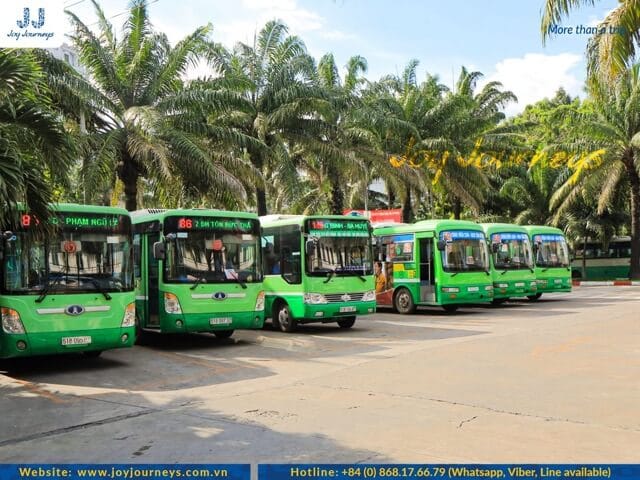
Inter-Provincial Buses:
In Vietnam, interprovincial buses connect several towns and villages. They frequently have reclining seats and air conditioning, making them more pleasant than city buses. They can, however, be more expensive and slower than other forms of transportation like railroads or domestic flights.
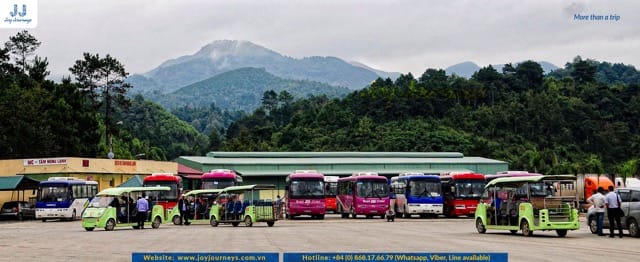
City bus tours:
City bus tours are a practical and inexpensive method to see the cities’ top sights while discovering their histories and cultures.
They are also an excellent option if you need more time or want to avoid dealing with the headache of using public transportation to move about the city.
The Hanoi and Ho Chi Minh bus tours are hop-on, hop-off tours that take tourists to some of the most popular attractions.
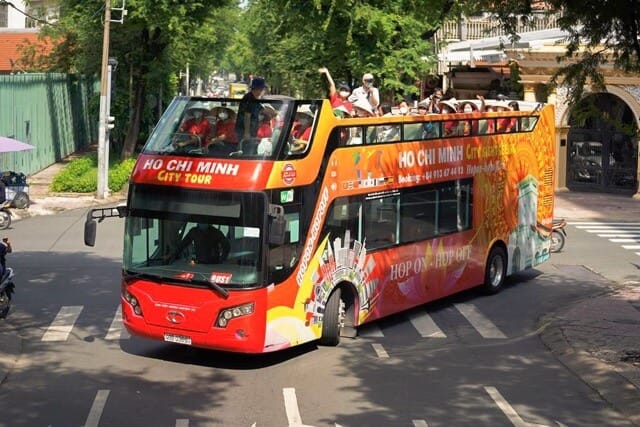
Average bus costs:
A city bus ticket in Vietnam is usually between 5,000 to 10,000 Vietnamese Dong (VND), which is less than $0.50.
The cost of an inter-provincial bus ticket varies depending on the distance and the type of bus.
A ticket for a standard bus can cost between 100,000 and 300,000 VND ($4–$13), while a ticket for a luxury bus can cost up to 500,000 VND ($22) or more.
Generally, buses used for public transportation in Vietnam offer a practical and affordable means of getting across the nation.
When seeing Vietnam, using the bus is a fantastic choice to think about, regardless of whether you’re a budget traveler or a local.
Taxis are also very popular in big cities.
Tips for Taking Public Transportation Buses in Vietnam
With its fascinating culture, breathtaking scenery, and delectable cuisine, Vietnam is a place that is best explored slowly. The Vietnam bus system for public transportation is the best way to accomplish this.
You may view Vietnam from a different angle and engage with locals along the journey, making it not only an affordable but also an effective method of travel.
However, navigating the public transportation system can be challenging for first-time visitors. We’ve put together some insider tips and tricks to help you maximize your bus travel experience in Vietnam.
Understanding the bus route and schedule: When using the public bus system in Vietnam, it is vital to be aware of the route and schedule. This information is available online or at the bus stop. If you need clarification, asking locals or the bus driver for assistance is also a good idea.
Preparing for a long journey: It’s vital to pack certain essentials for a lengthy journey, like an interprovincial bus ride, such as water, food, and a sweater or jacket because the bus’s air conditioning might get chilly. Additionally, you might want to bring some entertainment, like a book or music, to pass the time.
Safety concerns and precautions: Buses used for public transit in Vietnam are typically safe. However, there are some safety measures you can take. Keeping your belongings close at hand and never leaving them unattended will help.
In crowded areas, especially during peak hours, you should also be on the lookout for pickpockets. Additionally crucial are using a seatbelt when offered and paying attention to the bus driver or conductor’s safety instructions.
How to pay for and board a public transportation bus:
You can buy a ticket at the Vietnam bus station or provide cash to the conductor aboard to pay for a Vietnam bus ride.
It’s vital to wait in line and refrain from pushing or shoving when boarding the bus. After boarding, take a seat and get your ticket or payment ready. You can ask the conductor for advice if you need clarification.
Tips for getting the most out of your journey:
Bus travel on Vietnam’s public transportation system is more than simply traveling from point A to point B; it’s also about getting to know the local culture and people.
Try engaging in discussion with locals or other visitors to make the most of your trip, or take it easy and take in your surroundings. You’re always trying to figure out what you’ll find!
Uber is not available in Vietnam, but you can use Grab instead.
Popular Public Transportation Bus Routes in Vietnam
Let us take a closer look at some of the most popular public transportation bus routes in major cities in Vietnam.
Hanoi city bus routes:
The bus system in Hanoi, the capital of Vietnam, is enormous and serves most of the city. The number 9 bus, which travels from the Old Quarter to the West Lake region, and the number 86 bus, which connects Hanoi’s Noi Bai International Airport with the city center, are popular city bus routes.
Some of the more popular bus routes in Hanoi include:
1. Route 01: Yen Nghia Bus Station – Hoan Kiem Lake.
2. Route 02: Long Bien Bus Station – My Dinh Bus Station.
3. Route 09: Kim Giang Bus Station – My Dinh Bus Station.
4. Route 14: Long Bien Bus Station – Giap Bat Bus Station.
5. Route 22: Giap Bat Bus Station – Noi Bai International Airport.
6. Route 23: Giap Bat Bus Station – Phap Van Bus Station.
7. Route 32: My Dinh Bus Station – Noi Bai International Airport.
8. Route 36: Long Bien Bus Station – Thanh Xuan.
These routes serve various parts of the city and are frequently used by locals and tourists.
Ho Chi Minh City city bus routes:
Ho Chi Minh City, also known as Saigon, is another major city in Vietnam with a bustling public transportation bus system. Popular city bus routes include the number 1 bus, which runs from Ben Thanh Market to Cho Lon, and the number 152 bus, which connects Ho Chi Minh City’s Tan Son Nhat International Airport with the city center.
Some of the more popular bus routes in the city include:
1. Route 1: Cho Lon – Ben Thanh Market – Pham Ngu Lao – Ben Thanh Bus Station.
2. Route 19: Tan Binh – Ben Thanh Market – District 2.
3. Route 34: Ben Thanh Market – District 7.
4. Route 52: Ben Thanh Market – Mien Dong Bus Station.
5. Route 150: Ben Thanh Market – Long An.
6. Route 109: Tan Son Nhat Airport – Ben Thanh Market.
7. Route 88: Ben Thanh Market – An Suong Bus Station.
8. Route 11: Ben Thanh Market – Tan Binh Industrial Park.
Remember that routes and schedules may change over time, so it’s always a good idea to double-check with the bus company or a local transportation authority for the latest information.
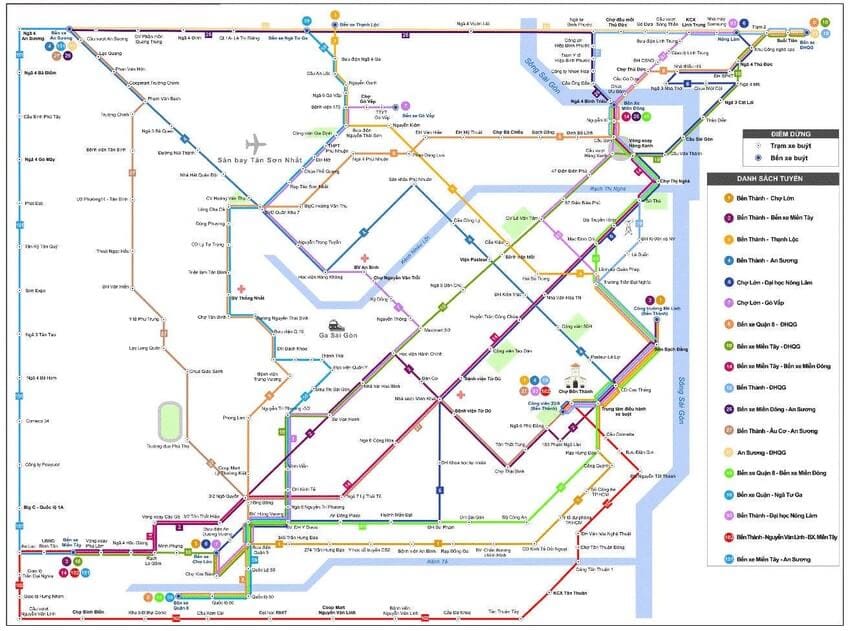
Da Nang City bus routes:
Da Nang, a coastal city in central Vietnam, has a growing public transportation bus system that’s both convenient and affordable. Popular city bus routes include the number 1 bus, which runs from Da Nang city center to Hoi An, and the number 4 bus, which connects Da Nang’s international airport with the city center.
Hue to Da Nang inter-provincial bus route:
The route between Hue and Da Nang is one of Vietnam’s most popular inter-provincial bus routes, offering stunning views of the country’s coastal scenery. The journey takes around 3 hours and passes through the Hai Van Pass, a scenic mountain pass considered one of Vietnam’s most beautiful.
Can Tho city bus routes:
Can Tho, a bustling city in the Mekong Delta region, has a public transportation bus system ideal for exploring the city and its surroundings. Popular city bus routes include the number 1 bus, which runs from Can Tho city center to Cai Rang Floating Market, and the number 2 bus, which connects Can Tho city center with the city’s major universities.
In conclusion, Vietnam’s public transportation Vietnam bus system offers a convenient and affordable way to explore many cities and towns.
A Guide to Luxury Buses in Vietnam
With the introduction of luxury and sleeper buses, Vietnam’s public transportation system has advanced significantly in recent years, offering a more convenient and pleasant option for long-distance travel.
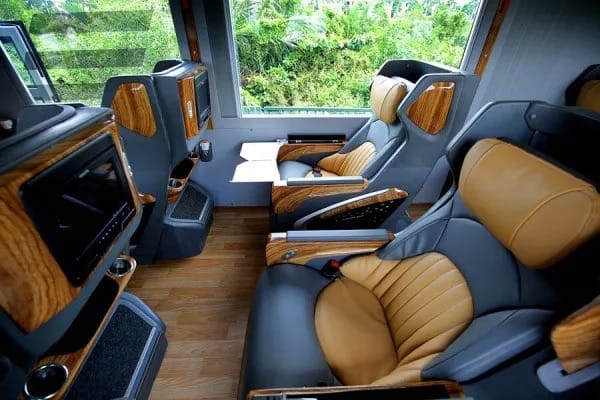
Types of Luxury and Sleeper Buses in Vietnam:
1. VIP buses: These buses offer the most luxurious travel experience in Vietnam, with fully reclining seats, air conditioning, personal TVs, and free snacks and drinks.
2. Sleeper buses: These buses are designed for overnight travel, with reclining seats that convert into beds, blankets, and pillows to ensure a comfortable journey. Some sleeper buses also offer personal TVs and charging sockets.
3. Semi-sleeper buses: These buses have seats that recline to a certain angle, making them more comfortable for long journeys. They also have air conditioning and charging sockets.
Tips for Taking Luxury and Sleeper Buses in Vietnam:
1. Book in advance: Luxury and sleeper buses are in high demand, especially during peak travel season, so booking your tickets in advance is important to ensure availability.
2. Check the route and schedule: Ensure to check the bus route and schedule beforehand to avoid confusion or last-minute changes.
3. Bring essentials: While luxury and sleeper buses provide more comfort than standard buses, it’s still a good idea to bring essentials such as water, snacks, and a sweater or jacket to stay comfortable during the journey.
4. Be mindful of your belongings: Keep your belongings close to you and don’t leave them unattended, especially during rest stops or when disembarking from the bus.
Famous Luxury and Sleeper Bus Routes in Vietnam:
1. Ho Chi Minh City to Da Nang: This route is one of the most popular in Vietnam, offering stunning views of the country’s coastal scenery.
2. Hanoi to Sapa: This route takes passengers through the breathtaking mountain landscapes of northern Vietnam, with stops in the picturesque town of Sapa.
3. Ho Chi Minh City to Nha Trang: This route takes passengers along the scenic coastal road, with stops in the vibrant beach town of Nha Trang.
Tourists looking for a more convenient and comfortable method to explore Vietnam may consider taking a luxury or sleeper bus.
If you follow these suggestions and consider these well-known bus routes, you can take a trip through Vietnam’s breathtaking scenery and fascinating cultures that you won’t soon forget.
If you are preparing for a long trip in Vietnam, renting a motorbike will be a more interesting option.
Public Transportation Bus Apps in Vietnam
Using Vietnam’s public transportation system might be challenging, especially for first-time travelers.
Thankfully, several applications are available that make it simpler to locate bus routes and schedules and receive real-time alerts on the whereabouts and estimated times of arrival. Moovit and BusMap are the two most widely used applications.
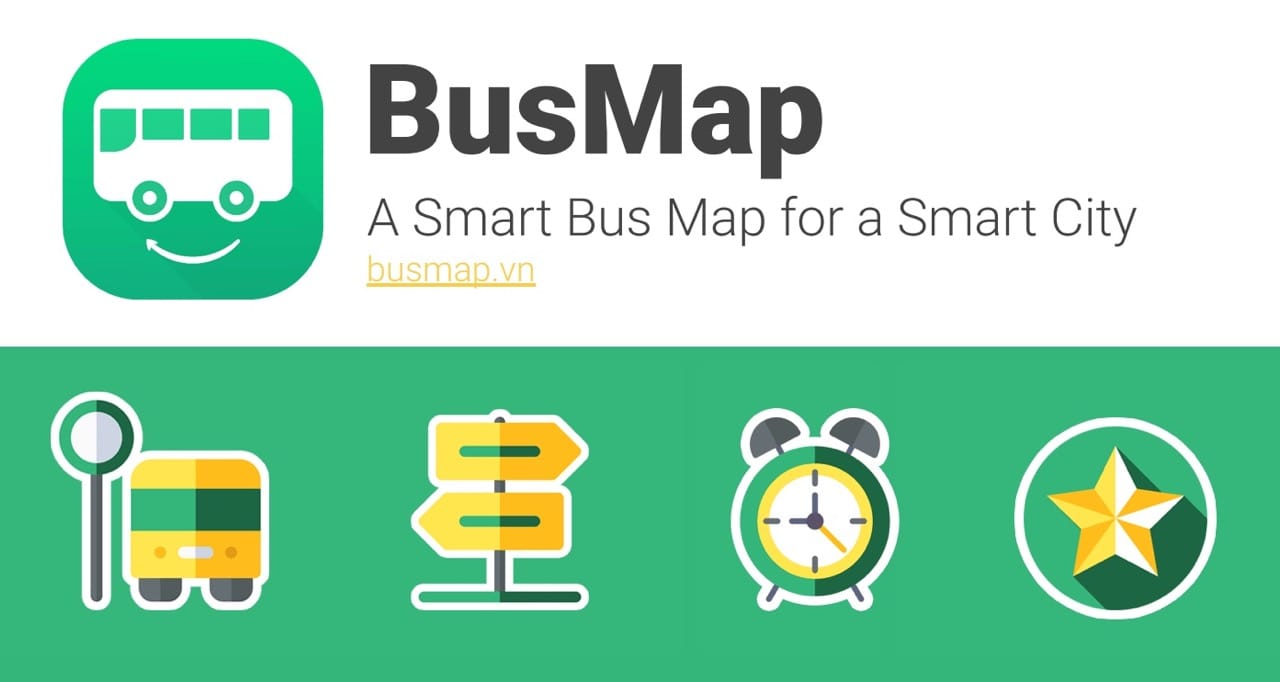
These apps can be downloaded to your phone with location services enabled, enabling you to search for bus routes and obtain real-time updates on bus location and arrival times.
While these apps are practical and economical, they can be tech-dependent, require training to use, and use a lot of data. In general, bus navigation apps are useful for navigating Vietnam’s transportation network.
Conclusion
In summary, Vietnam’s public transportation system offers standard, luxury, and sleeper buses, each with their own pros and cons. Standard buses are affordable but uncomfortable, while luxury and sleeper buses are more comfortable but more expensive.
The best Vietnam bus type depends on your travel needs and preferences. We recommend trying out different types of buses and using public transportation bus apps to easily navigate the system. With these tips, you can explore Vietnam’s cities and countryside like a local.
Frequently Asked Questions
Q: Are buses safe in Vietnam?
A: Buses in Vietnam are generally safe, but it’s essential to choose a reputable bus company and keep an eye on your belongings.
Q: Do sleeper buses have toilets in Vietnam?
A: Yes, there are toilets on board many sleeper buses in Vietnam. On the other hand, this may change based on the specific bus company and route. While some newer or more luxury buses are more likely to have restrooms, some older or less expensive buses might not.
Q: How much is a bus ticket in Vietnam?
A: Bus ticket prices in Vietnam vary based on factors such as trip length, bus type, and luxury level. A short city trip can cost between 5,000 and 15,000 VND ($0.22 to $0.66), while longer interstate trips can cost between 50,000 and 300,000 VND ($2.20 to $13.20) or more. Prices may also be higher during peak travel times such as holidays.
Q: How to book a bus in Vietnam?
A: You can book a bus in Vietnam by purchasing tickets directly from bus companies’ websites or through travel agencies. Well-known bus companies in Vietnam include Mai Linh, Phuong Trang, and Futa Bus Lines. Travel agencies can help you find the best routes, costs, and schedules to suit your needs.


Related Posts
Saigon’s “Flower Market Replica”: Where To Find Them
Ho Chi Minh City’s floral charm is not limited to its bustling wholesale markets. Imagine wandering through a place where vibrant petals, fragrant blooms, and the spirit of traditional Vietnamese markets come alive—without the overwhelming crowds. A flower market replica captures that magic, blending the beauty of fresh flowers with the charm of a curated, […]
Is it Safe to Travel to Vietnam Right Now? A Complete 2025 Guide
Vietnam has emerged as one of Southeast Asia’s most captivating destinations, drawing millions of visitors annually with its rich culture, stunning landscapes, and incredible cuisine. However, many travelers still ask: Is it safe to travel to Vietnam right now? This comprehensive guide provides you with everything you need to know about Vietnam travel safety in […]
Ho Chi Minh Cu Chi Tunnels Tour: The Ultimate Guide
The Cu Chi Tunnels stand as one of Vietnam’s most remarkable historical sites, offering visitors a profound glimpse into the ingenuity and resilience displayed during the Vietnam War. For travelers, a Ho Chi Minh Cu Chi tunnels tour represents an essential experience that combines education, adventure, and deep cultural understanding. This comprehensive guide will help […]